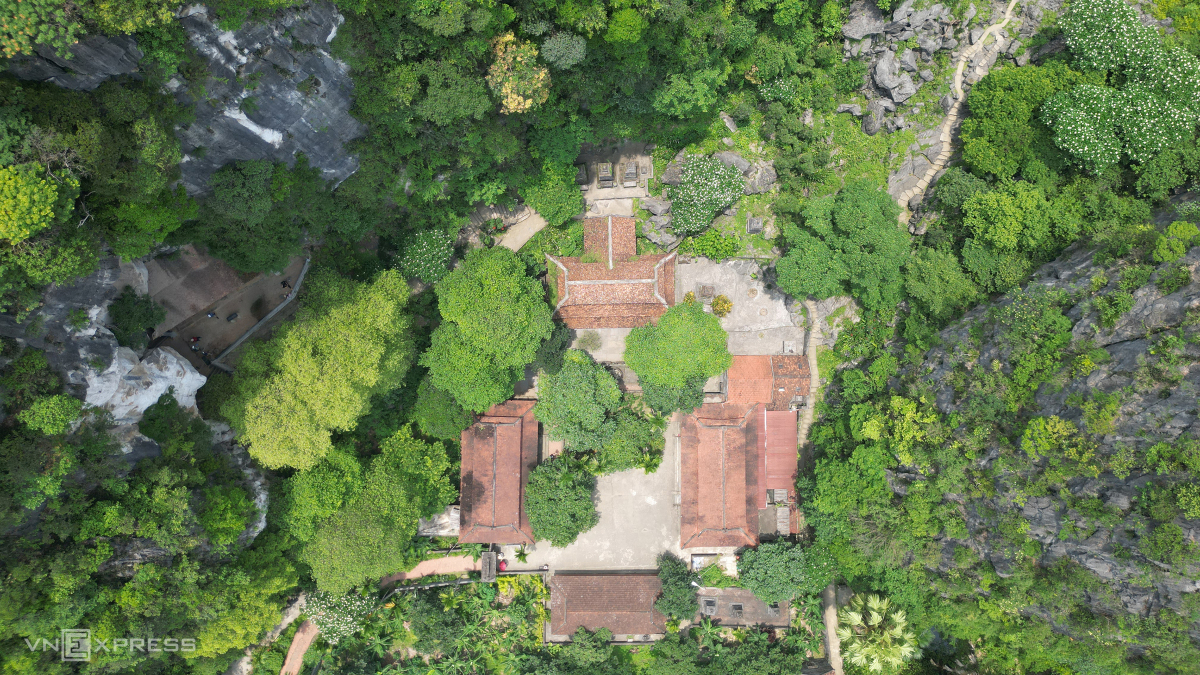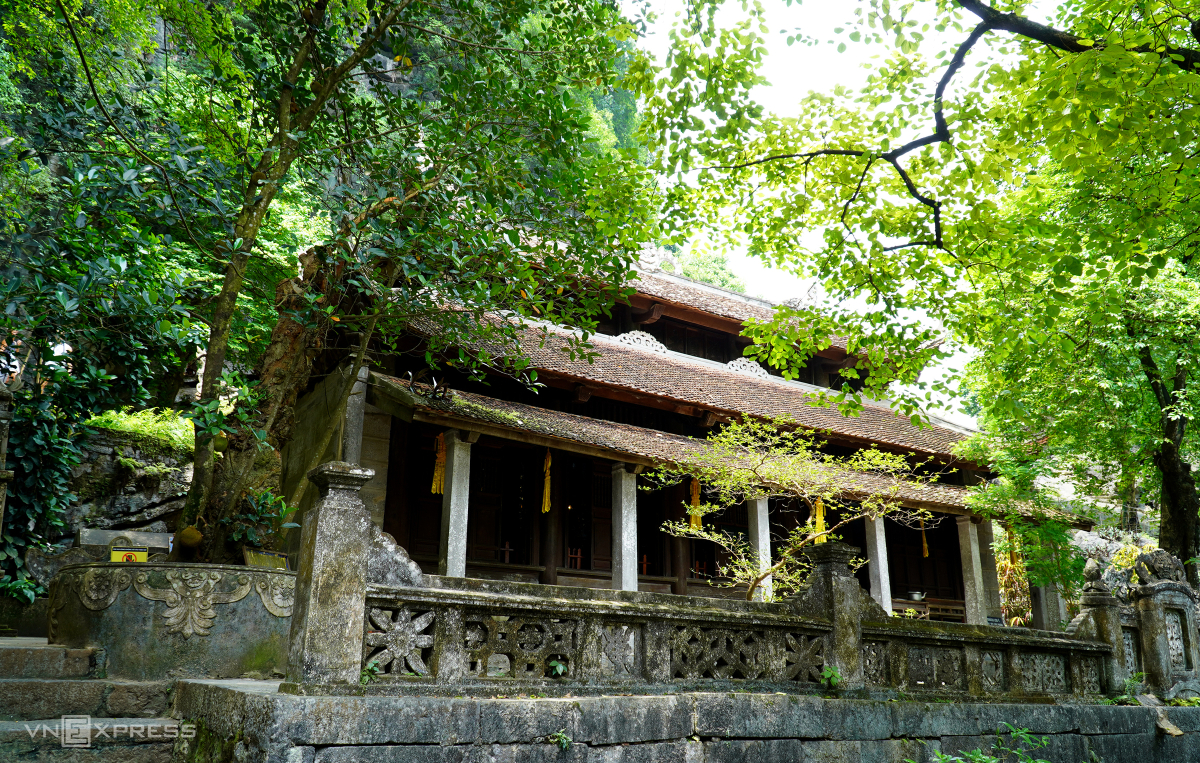The Bich Dong Pagoda is embedded in the limestone cliffs of Ninh Hai Commune, Hoa Lu District, just outside Ninh Binh City.
Built in 1428, it was initially a small temple on a mountain peak. It was originally named Bach Ngoc Thach Son Dong, which roughly translates to “remote stone temple as beautiful and pure as jade.”
In 1705, during the reign of King Le Du Tong, two monks from Nam Dinh named Tri Kien and Tri The arrived at Bich Dong. They reveled in the beauty of the location and the existing small temple. They decided to end their roamings and stay at Bich Dong. They wanted to begin raising funds to transform the small, isolated location into a larger place of worship. They were soon successful and began expanding the temple.
The temple is separated from the road in Ninh Hai Commune by a lake surrounding the foot of the mountain. To enter, visitors must cross a small stone bridge without railings.
According to Bich Dong Pagoda abbess Nun Thich Dam Tho, the temple complex was built in the shape of the Chinese character "Tam" (meaning three), with three separate temples situated in different positions around Thai Vien Mountain.
This photo shows Ha Temple, located at the mountain's base, built mainly of ironwood and limestone. The stone columns of Ha temple are monoliths 3-4 meters tall.
The temple roof curves like a blade, with yin-yang tiles. These clay roof tiles fit together like puzzle pieces (yin-yang) to make wavy roofs that keep houses cool. Around Ha Temple, numerous hundred-year-old trees provide shade year-round.
From Ha Temple, climbing about 100 S-shaped winding stone steps halfway up the mountain leads to Trung Temple.
This is a unique temple in Ninh Binh because only part of the roof and door are plainly visible from the outside. The remaining structures are hidden within a mountain cave.
On the roof of Trung Temple, there are 10 golden-painted statues of Chinese characters, which mean all the monks in Vietnam originated from Bich Dong Pagoda.
Above the temple roof, two Chinese characters for Bich Dong, said to be inscribed by Lord Trinh Sam, who ruled northern Vietnam from 1767 to 1782 AD, can be seen. According to historical records kept at Bich Dong Pagoda, Lord Trinh Sam visited in the Year of the Horse, 1774. He greatly admired the landscape, and renamed the temple Bich Dong, which literally means “Green Pearl Grotto”.
A 300-year-old bell at Bich Dong Pagoda.
In 1707, the monks Tri Kien and Tri The cast a large bell, which is currently hanging in Dark Cave behind Trung Temple. The bell is inscribed with Chinese characters, which roughly translate to: "Ascended the mountain/With blessings and fate/Open the mountain, carve the stone/Pure air perpetuates."
After visiting Trung Temple, visitors pass through a large cave, about 50 meters long, with innumerable variously shaped stalactites growing down from the roof of the cave in diverse, unique formations.
From Dark Cave, climbing about 40 more stone steps along the mountainside leads to Thuong Temple, also known as Dong Temple.
Thuong Temple is the oldest at Bich Dong, located at its highest point, near the Thai Vien mountain peak. From Thuong Temple, one can see five peaks converging towards Bich Dong like five lotus petals. This natural creation is commonly referred to poetically as Ngu Nhac Son (“the Five Mountains of Music”).
Inside Thuong Temple, Avalokitesvara Bodhisattva, a beloved Buddhist figure known for compassion and the ability to hear the cries of all beings, is worshipped. Beside the temple are two small shrines. One on the right worshiped the local deity, who is considered the guardian spirit of the land and protector of homes, businesses, and communities. The one on the left worshipping the mountain deity, a guardian of the mountains, keeping them healthy and safe, and looking out for those who live there.
Around Bich Dong Pagoda, dozens of ancient tombs serve as the resting places for the abbots and monks who have practiced here for 600 years.
Every day, thousands of visitors from all over come to Bich Dong to pay their respects and explore Bich Dong Pagoda, which is considered the second most beautiful cave in Vietnam.
Bich Dong Pagoda was officially designated as a special national heritage site in 2012, and two years later, UNESCO recognized it as a world heritage site along with the Tam Coc - Trang An Landscape Complex.


















